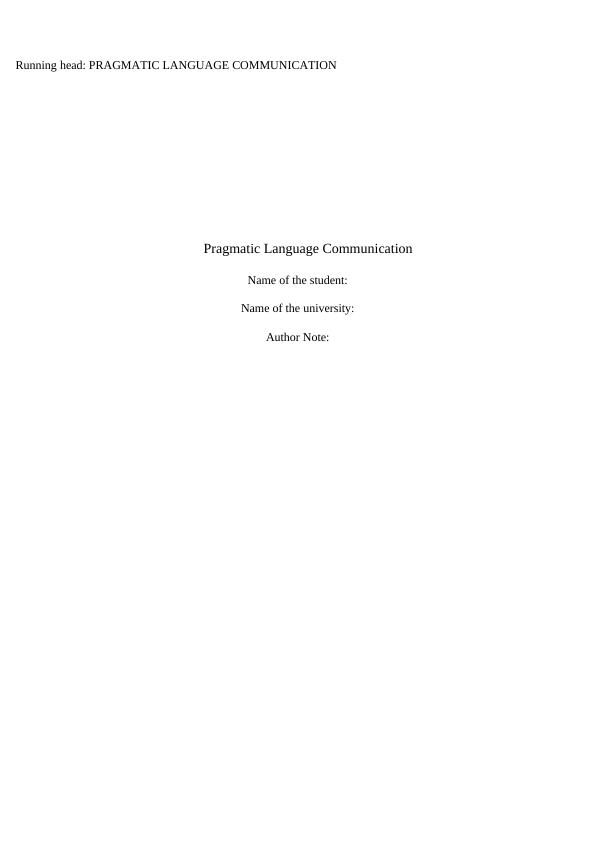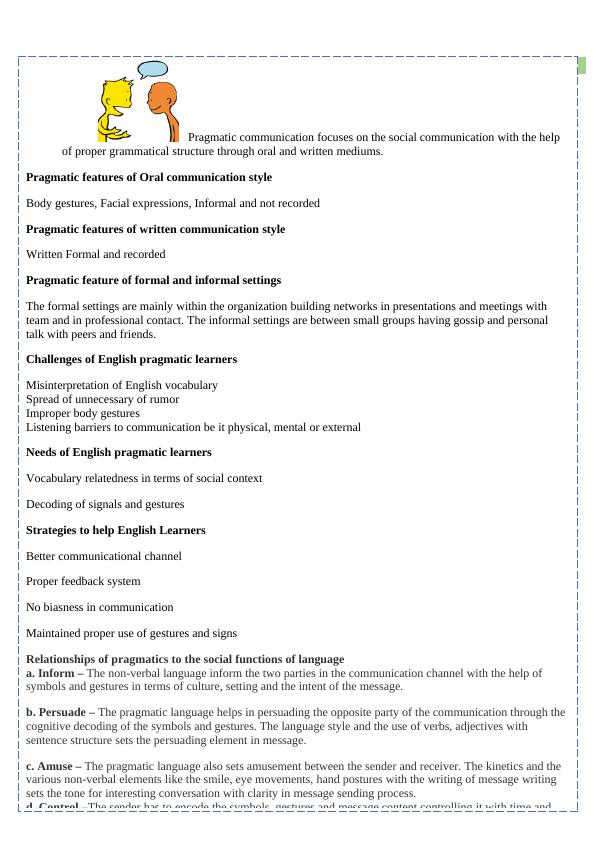Pragmatic Language Communication
Added on 2022-08-20
4 Pages722 Words143 Views
End of preview
Want to access all the pages? Upload your documents or become a member.
Communication: Verbal and Non-Verbal, Formal and Informal, Barriers to Communication
|4
|1006
|296
Enhancing Communication and Academic Skills in Health and Social Care Settings
|9
|1221
|127
Communication Models and Systems in Businesses
|17
|1064
|34
Communication Skills for Business - Desklib
|11
|1118
|433
Models of Communication and Communication Skills
|9
|2573
|240
Effective Team Working & Communication
|18
|1240
|237


